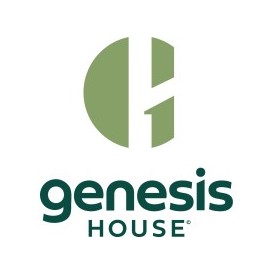When you or a loved one are struggling with addiction, you’ll likely encounter many types of recovery programs that can help.
Traditionally, 12-step programs like Alcoholics Anonymous (AA) or Narcotics Anonymous (NA) have been used as part of treatment programs at rehab centers or recommended as aftercare to provide structure after completing treatment.
However, some people don’t respond well to the traditional 12-step program structure or disagree with parts of these programs’ message, such as spiritual and faith-driven elements. Due to that, several non-12-step addiction recovery options are being developed to accommodate varying needs.
What’s the difference between 12-step vs. non-12-step programs? We’ll provide a complete overview here so you can make an educated decision when determining the right treatment option for you or a loved one.
What Are 12-Step Programs?
12-step programs like Alcoholics Anonymous (AA) have been used for many years and have tons of success stories.
AA began in 1935 when founders Bill Wilson and Dr. Bob Smith found that peer support helped them finally recover from ongoing alcohol addiction. They then started meeting with and supporting other alcoholics in their recovery process, with many achieving long-term sobriety.
After its success, AA became increasingly widespread across the U.S. and even made an impact globally.
Plus, similar programs were developed afterward that could help those struggling with other types of substance abuse aside from just alcohol. For example, Narcotics Anonymous (NA) was designed to help those struggling with drug addiction, and Cocaine Anonymous (CA) was developed for those experiencing cocaine addiction.
How 12-Step Programs Work
These programs are designed around 12 key steps that are meant to help achieve and maintain long-term sobriety after quitting drugs or alcohol. Many members say that they’re “working the steps” during the program.
Even after the 12 steps are completed, the programs generally recommend ongoing daily practice to ensure continued abstinence. Many meetings will consist of revisiting the steps to reinforce their impact.
Additionally, 12-step meetings involve more than just covering and following the steps. They also include active participation and peer support.
Meetings will allow members to share their experiences and current struggles with the group. It provides a strong, supportive network to air out problems and gain a better understanding of how common struggles influence addiction.
Another key part of the 12-step program is picking a sponsor. The sponsor is someone who can provide support and guidance as you complete the steps and maintain abstinence afterward. It’s generally recommended that you pick someone who’s had success in the program, has maintained sobriety for several years, and feels like they will be a positive influence on your recovery.
Common Problems with 12-Step Programs
12-step programs aren’t right for everyone. One of the common problems some people face with these programs is religious views are ingrained in several of the steps. For example, step 3 of AA states, “Made a decision to turn our will and our lives over to the care of God.”
A study in 2021 mentioned that a large portion of addiction treatment options in the U.S. are at least somewhat religious in nature. While that element is beneficial for some people, those who don’t share those beliefs can feel like it’s a barrier to begin the recovery process.
Some people also disagree with the structure or some of the other sentiments in the 12 steps. For instance, step 1 in AA is “Admitted we were powerless over alcohol.” While some people find that step works, others wish the phrasing felt more empowering.
Fortunately, other alternatives to 12-step programs are becoming more widespread for those seeking community support with a different structure that they respond to better.
What Are Non-12-Step Programs?
A non-12-step program is any option that doesn’t follow the traditional structure found in programs like AA, NA, or CA.
Some non-12-step options will have similar elements to programs like AA. For example, they can still have regular meetings that involve sharing with the group.
However, they’ll also include unique variations that accommodate different needs. For instance, many are secular in nature, meaning they have no religious or spiritual associations. Secular addiction treatment is preferred by some since it feels more open to different beliefs.
Non-12-step programs may also change the wording related to how recovery is approached, such as saying you have the power to overcome addiction rather than admitting you’re powerless over drugs or alcohol.
Common Non-12-Step Programs
Some of the common non-12-step options gaining popularity are:
- Self Management and Recovery Training (SMART) Recovery: SMART Recovery is a secular and evidence-based approach. Its recovery methods use cognitive behavioral therapy (CBT) and rational emotive behavioral therapy (REBT) to help participants learn skills to self-manage addiction while receiving peer support.
- Refuge Recovery: The Refuge Recovery program was built through the foundation of Buddhist practices. However, they accept anyone of any beliefs who wants to participate and aim to provide a supportive community for all. Many of their recovery practices are rooted in meditation, self-discovery, compassion, and community support.
- LifeRing: The LifeRing program is a secular option that focuses on positive messaging and empowerment. They aim to empower members to believe that recovery from addiction is possible and guide them to create a flexible approach that works best for each individual’s needs to maintain continued sobriety.
Key Differences Between 12-Step and Non-12-Step Programs
When you compare non-12-step programs like Smart Recovery vs. AA and other traditional 12-step programs, you’ll notice several key differences. Those include:
- Spiritual vs. secular: Traditional 12-step programs like AA and NA generally have more of a religious or spiritual undertone in the messaging. On the other hand, non-12-step options tend to be secular or more open to having members of varying beliefs.
- Structure: Many non-12-step programs provide flexible approaches to tackle addiction recovery in a way that each member feels works best for their needs. On the other hand, traditional 12-step programs have a clear and consistent structure as you work through each step.
- Accountability: The traditional 12-step program focuses on accountability through sponsorship, whereas non-12-step options may involve therapist-guided approaches or more general peer support within the full group.
- Philosophy: A 12-step program will focus on treating drug or alcohol addiction like a disease that members must manage and remain wary of. Conversely, non-12-step programs focus more on behavioral or psychological models that explain why addiction happens and how it can be overcome.
- Group identity: 12-step options like AA and NA often see membership as a lifelong commitment to maintain sobriety. Alternatively, non-12-step programs usually focus on developing self-sufficiency in the long term and teaching members how they can manage addiction on their own.
Pros and Cons of Each Approach
There are pros and cons to both 12-step and non-12-step programs.
Pros of 12-Step Programs
Some of the key advantages of 12-step programs are:
- Meetings are very accessible. 12-step programs have been around for a long time and meetings are widely available in many locations.
- It provides a consistent and clear structure where there’s little room for confusion.
- They include frequent meetings for continued support.
- Some people find the faith-based approach helps them feel connected to something greater than themselves.
Cons of 12-Step Programs
Potential cons of 12-step programs are:
- Some people find the faith-based elements off-putting and it can act as a barrier to entry.
- Some individuals don’t like the wording of certain steps and may feel like the program lacks empowerment.
- It’s not as flexible for those who respond better to different approaches.
Pros of Non-12-Step Programs
Advantages of non-12-step programs can include:
- They provide opportunities for people of different beliefs and needs to receive support and guidance.
- They often have a science-based nature and involve evidence-based practices like cognitive behavioral therapy.
- They’re highly flexible for people with different needs and schedules.
- Many focus on positive messaging and empowerment.
Cons of Non-12-Step Programs
Some potential cons that can come with non-12-step options are:
- Many are still growing and may not be available in all locations.
- Some people could find the flexible approach harder to follow.
- The self-sufficient model isn’t right for everyone. Some individuals respond better to sponsor-based support in 12-step programs.
How to Choose the Right Program
Ultimately, the right program depends on individual needs. A great way to start is consulting with a drug and alcohol treatment center. A treatment center can provide a full diagnosis and assessment of your current situation to determine treatment options that will work best for you.
Remember that when you choose a treatment route, you don’t have to feel committed to that one single option. If you feel like anything isn’t working for you, consult with your treatment team at the facility so they can make adjustments. Some people even find that going with a combination of a 12-step and non-12-step approach is the ideal fit.
How Genesis House Helps with Drug and Alcohol Addiction Treatment
Genesis House is a drug and alcohol addiction treatment center. We’re here to help each step of the way when you or a loved one is struggling with drug or alcohol addiction. All our programs are customizable to your needs whether you need medical detox, inpatient or outpatient treatment, or want to follow a 12-step or non-12-step approach.
You can schedule a consultation with us, where we’ll get to know you and provide recommendations based on your needs. Throughout the process, our friendly treatment staff will be there to support you if any adjustments are needed.
Contact us today to learn more about how Genesis House can help.
References
- Alcoholics Anonymous. “The Start and Growth of A.A.” https://www.aa.org/the-start-and-growth-of-aa
- Grant Weinandy, Jennifer T., and Joshua B. Grubbs. “Religious and Spiritual Beliefs and Attitudes towards Addiction and Addiction Treatment: A Scoping Review.” Addictive Behaviors Reports, vol. 14, Nov. 2021, p. 100393, doi:10.1016/j.abrep.2021.100393. https://www.sciencedirect.com/science/article/pii/S2352853221000560
- SMART Recovery. “Learn about SMART Recovery – SMART Recovery.” https://smartrecovery.org/what-is-smart-recovery
- “About.” Refuge Recovery World Services, https://www.refugerecovery.org/about
5. “LifeRing Recovery Menu – LifeRing Secular Recovery.” https://lifering.org/lifering-recovery-menu/






